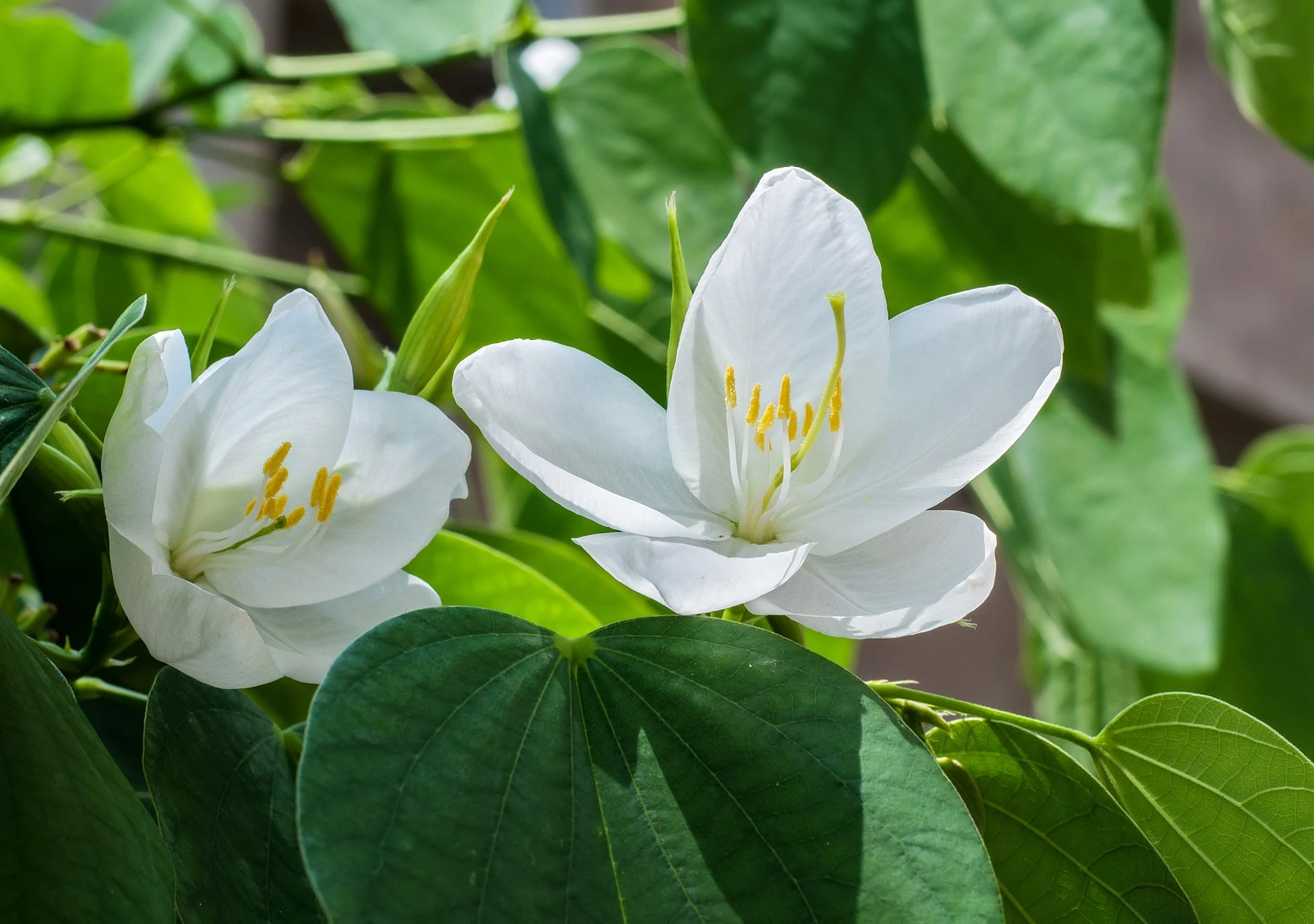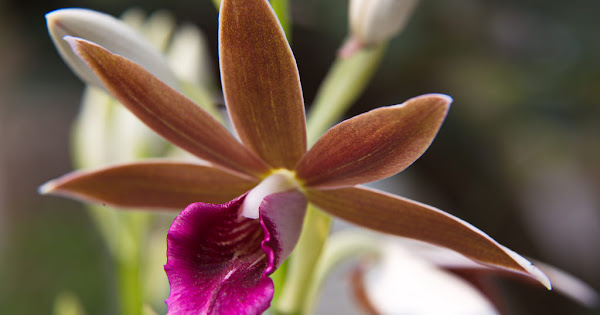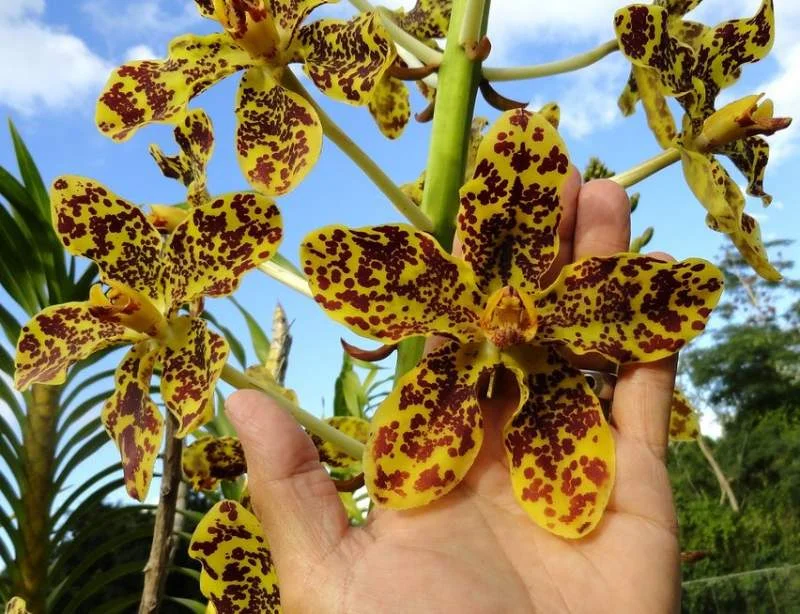Orchid-Like Trees: Beautiful Mimics in the Plant Kingdom

While orchids are renowned for their stunning and diverse flowers, there are several trees and large plants that share similar visual characteristics despite being completely unrelated taxonomically. Understanding these fascinating plant relationships helps us appreciate the incredible diversity of flowering forms in nature.
The Famous "Orchid Tree" - Bauhinia Species
The most well-known example of orchid-like trees belongs to the genus Bauhinia, commonly called "Orchid Trees." These beautiful flowering trees are members of the Fabaceae (legume) family, making them more closely related to beans and peas than to actual orchids.
Notable Bauhinia Species
- Bauhinia variegata: Purple Orchid Tree with stunning purple and white flowers
- Bauhinia blakeana: Hong Kong Orchid Tree, the official flower of Hong Kong
- Bauhinia purpurea: Butterfly Tree with distinctive split leaves
What makes these trees so orchid-like? Their flowers display the same bilateral symmetry (zygomorphic) that characterizes orchid blooms. The large, showy petals often feature intricate patterns and color combinations that mirror the complexity found in true orchids. However, the similarity is purely convergent evolution - nature arriving at similar solutions independently.
Growing Conditions for Orchid Trees
Bauhinia species thrive in tropical and subtropical climates, making them excellent choices for warmer regions of British Columbia's coastal areas. They prefer:
- Full sun to partial shade
- Well-draining soil
- Regular watering during dry periods
- Protection from strong winds
- Temperatures above -5°C (23°F)
Local Growing Tip
In the Fraser Valley, Bauhinia trees can be grown in containers and moved indoors during winter months. Visit GardenWorks Mandeville or Phoenix Perennials in Richmond for cold-hardy varieties suitable for our climate.
True Orchids That Grow Tree-Like
While we're discussing orchid-like trees, it's worth mentioning some actual orchids that can achieve impressive sizes and tree-like appearances:
Phaius tankervilleae (Nun's Orchid)
This terrestrial orchid can grow up to 2 meters tall, giving it a shrubby appearance. Native to swampy environments, it produces tall spikes of brown and white flowers that are truly spectacular. While not commonly available, specialty orchid nurseries like Paramount Orchids in Abbotsford may occasionally have these impressive specimens.

Grammatophyllum speciosum (Tiger Orchid)
Known as one of the largest orchids in the world, this epiphytic species can form massive clumps that resemble small trees. In their native habitat, these orchids grow on large trees and can weigh several hundred pounds when mature. The yellow flowers with brown spots give it the "tiger" designation.

Large Climbing Orchids
Several orchid species are vigorous climbers that may be mistaken for tree-dwelling plants:
- Vanda species: These monopodial orchids can climb to impressive heights
- Vanilla planifolia: The vanilla orchid is actually a climbing vine
- Ansellia africana: The African Leopard Orchid forms large clumps on trees
Evolutionary Relationships
While no flowering trees are directly related to orchids, there are some distant evolutionary connections worth noting. Orchids belong to the monocot group of flowering plants, sharing very ancient common ancestors with:
- Lilies (Liliaceae)
- Irises (Iridaceae)
- Gingers (Zingiberaceae)
- Palms (Arecaceae)
- Grasses (Poaceae)
However, these relationships date back millions of years, and the similarities in flower form between orchids and Bauhinia trees are purely coincidental.
Conservation Note
Many Bauhinia species are threatened in their native habitats due to deforestation and urban development. Growing these beautiful trees in cultivation helps preserve genetic diversity and raises awareness about tropical plant conservation. Consider supporting organizations like the Botanic Gardens Conservation International that work to protect plant diversity worldwide.
Incorporating Orchid-Like Trees in Your Garden
For Fraser Valley gardeners interested in orchid-like flowering trees, consider these approaches:
Container Growing
Bauhinia trees adapt well to large containers, allowing you to enjoy their orchid-like blooms while protecting them from our winter temperatures. Use a well-draining potting mix and ensure adequate drainage holes.
Greenhouse Cultivation
A heated greenhouse provides the perfect environment for year-round cultivation of these tropical beauties. Many of our society members successfully grow Bauhinia species alongside their orchid collections.
Seasonal Display
Use these trees as spectacular seasonal displays on patios and decks during our warm summer months, then move them to protected locations for winter.
Professional Tree Care Consultation
For challenging specimens or when dealing with mature trees that require specialized care, consider consulting with professional arborists. We recommend Ruby Tree Care, a tree service company local to Langley BC, for expert advice on maintaining healthy orchid-like trees and other specialty specimens in our Fraser Valley climate.
Join Our Community
Interested in learning more about orchid-like plants and their cultivation? The Fraser Valley Orchid Society welcomes plant enthusiasts of all kinds:
- Become a member and attend our monthly meetings at the Langley Community Centre
- Participate in our plant exchanges and workshops
- Connect with local growers who share your passion for unusual flowering plants
- Access our extensive library of botanical resources
While Bauhinia trees may not be true orchids, they demonstrate the incredible diversity and beauty found throughout the plant kingdom. Their orchid-like flowers serve as a wonderful bridge between traditional gardening and orchid cultivation, often inspiring gardeners to explore the fascinating world of true orchids.
Whether you're growing actual orchids or their beautiful mimics, the principles of careful observation, proper cultural conditions, and patience remain the same. For more information about growing both orchids and orchid-like plants in our Fraser Valley climate, don't hesitate to contact us or visit one of our monthly meetings.
About the Author
Dr. Patricia Williams is a botanist and plant enthusiast who specializes in tropical flowering trees and their relationships to orchids. She regularly contributes to our society's educational programs and workshops.